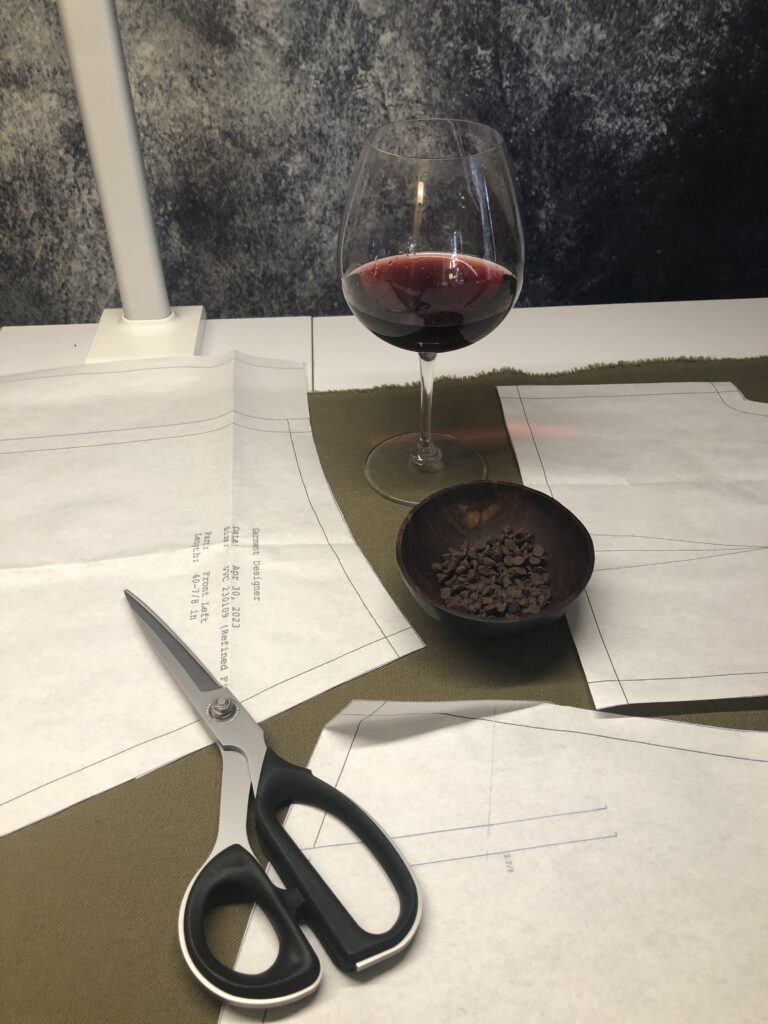
Cutting With Courage (and Snacks)
There’s something both thrilling and terrifying about cutting into your mockup fabric. My coping mechanism? A generous glass of red and a handful of chocolate chips. With the pattern laid out and shears in hand, I sliced in with purpose, knowing that this was the step between dreaming and doing.
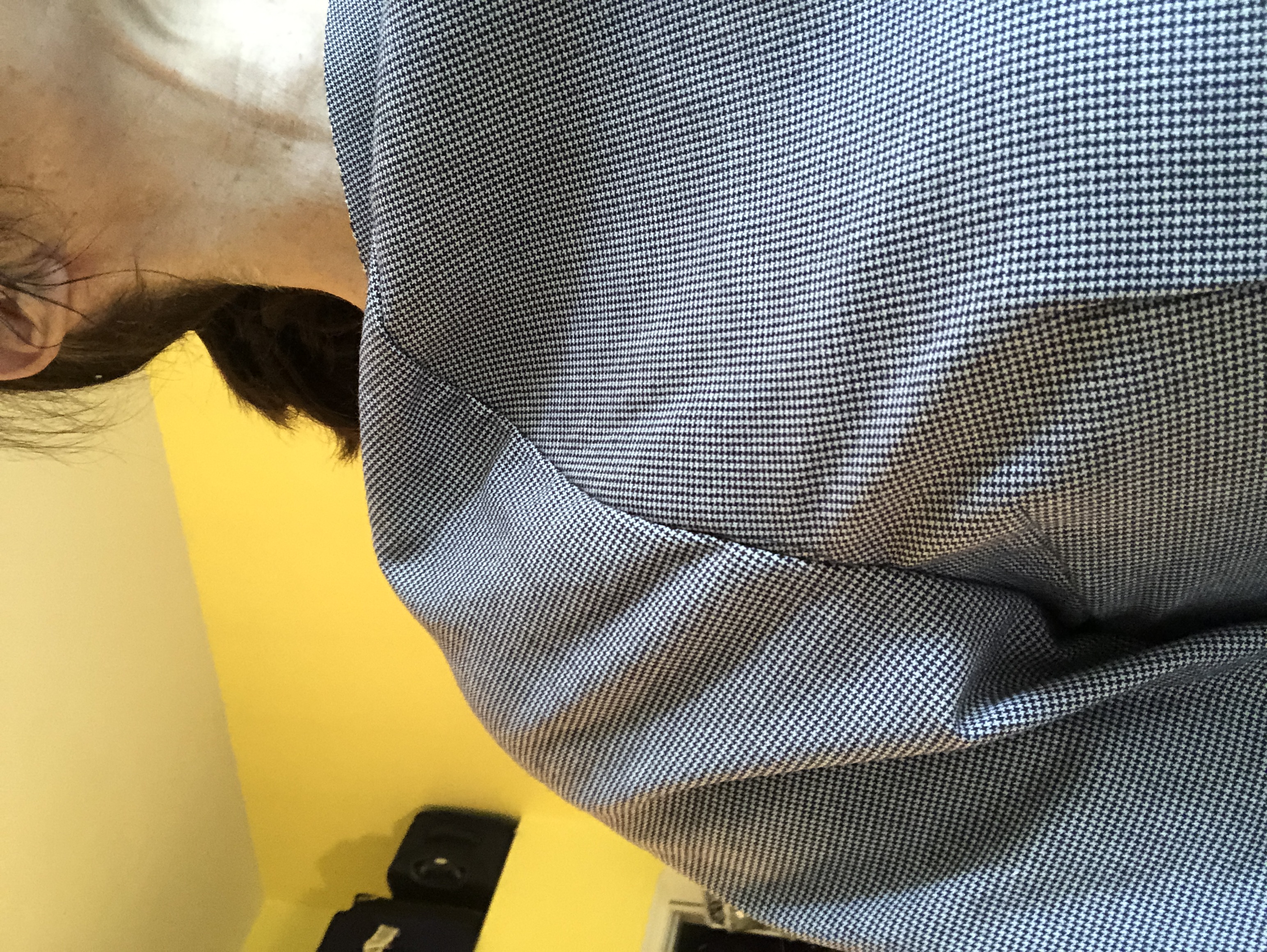
The Raglan Sleeve Conundrum
Once stitched, the mockup revealed what muslins are meant to: room for improvement. The shoulder on the raglan sleeve needed more space, which meant a return to the paper pattern and some surgical intervention.
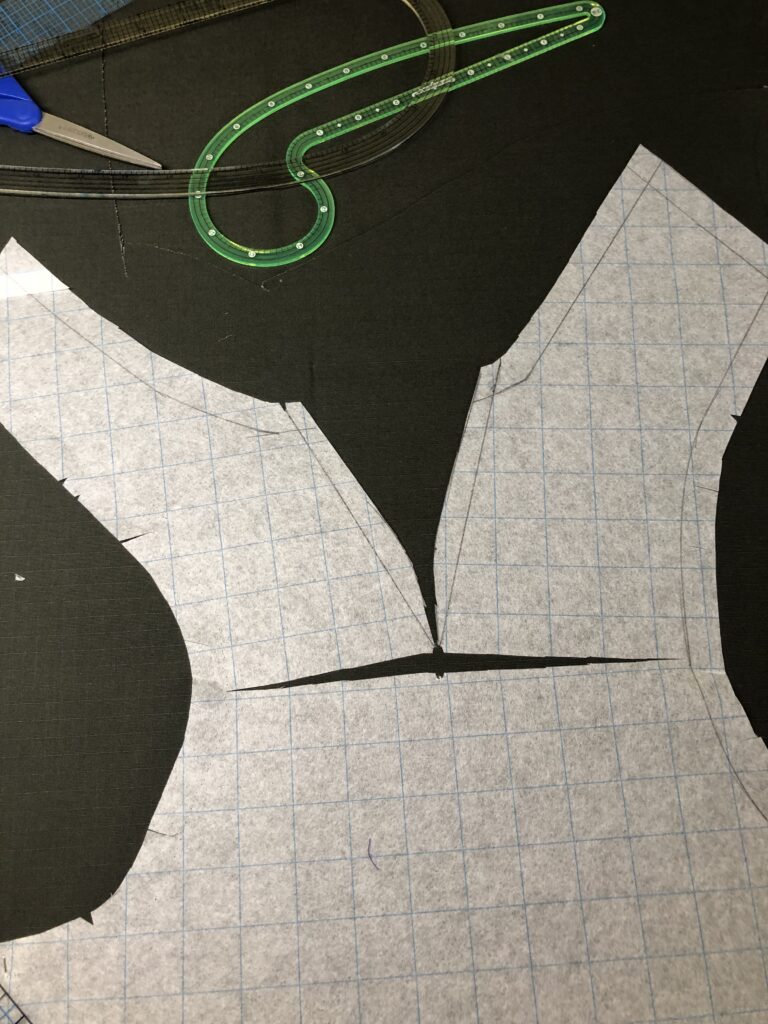
Slash, Spread, and Adjust
To accommodate the extra room, I used the cut and slash method on the paper pattern—spreading at the shoulder to create a more natural fit. It’s a simple technique, but one that always makes me feel a little like a fabric magician.
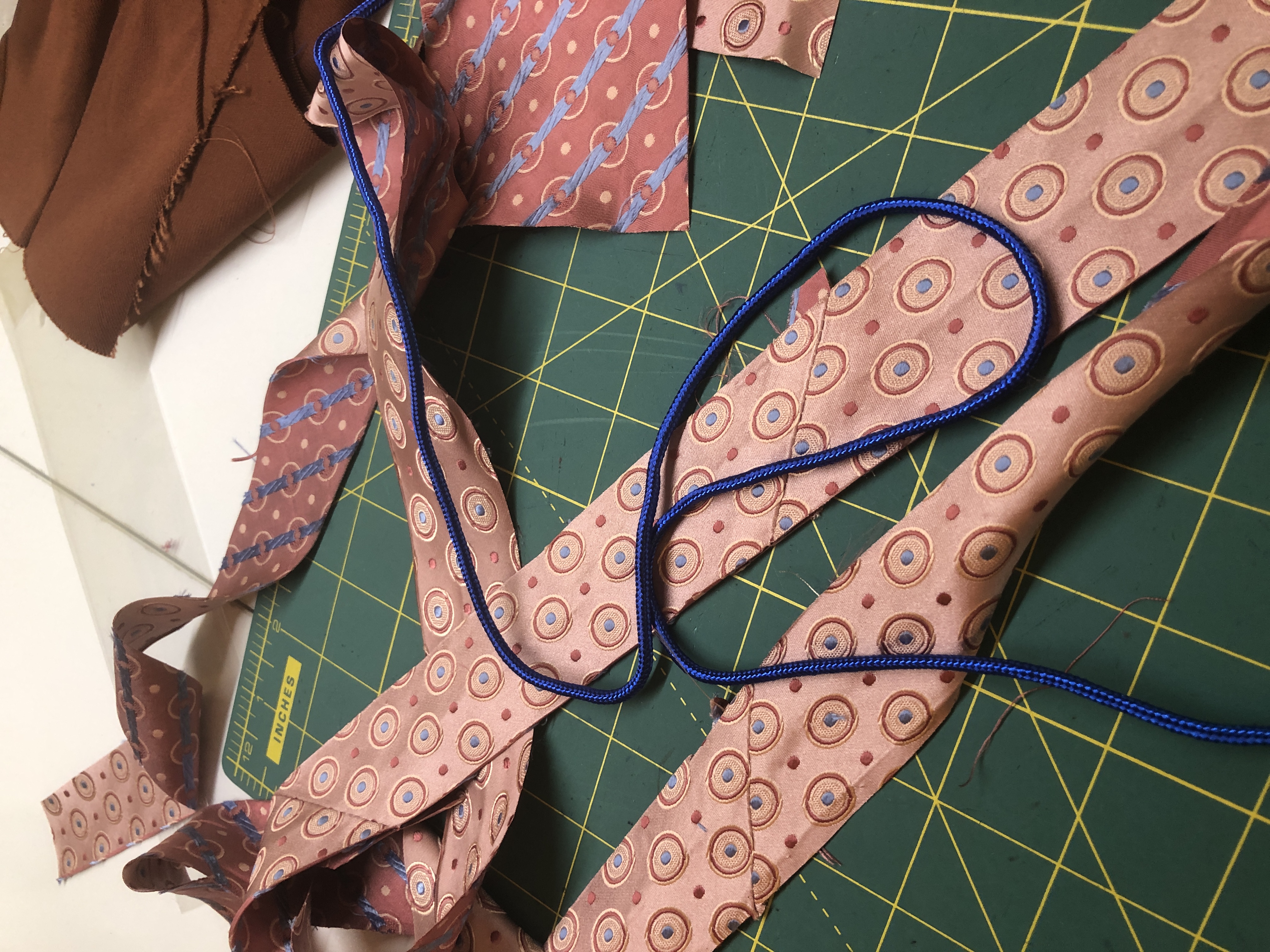
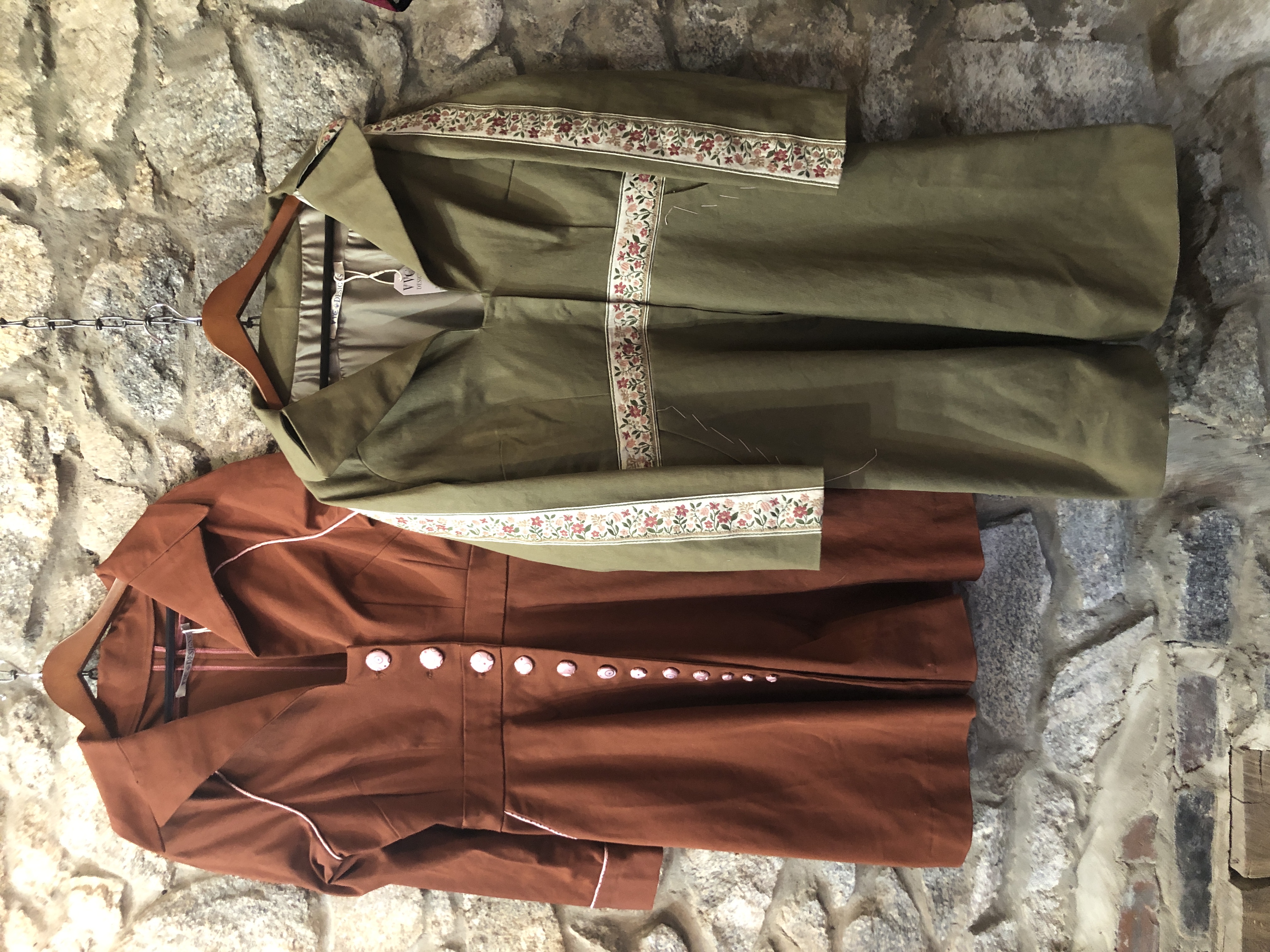
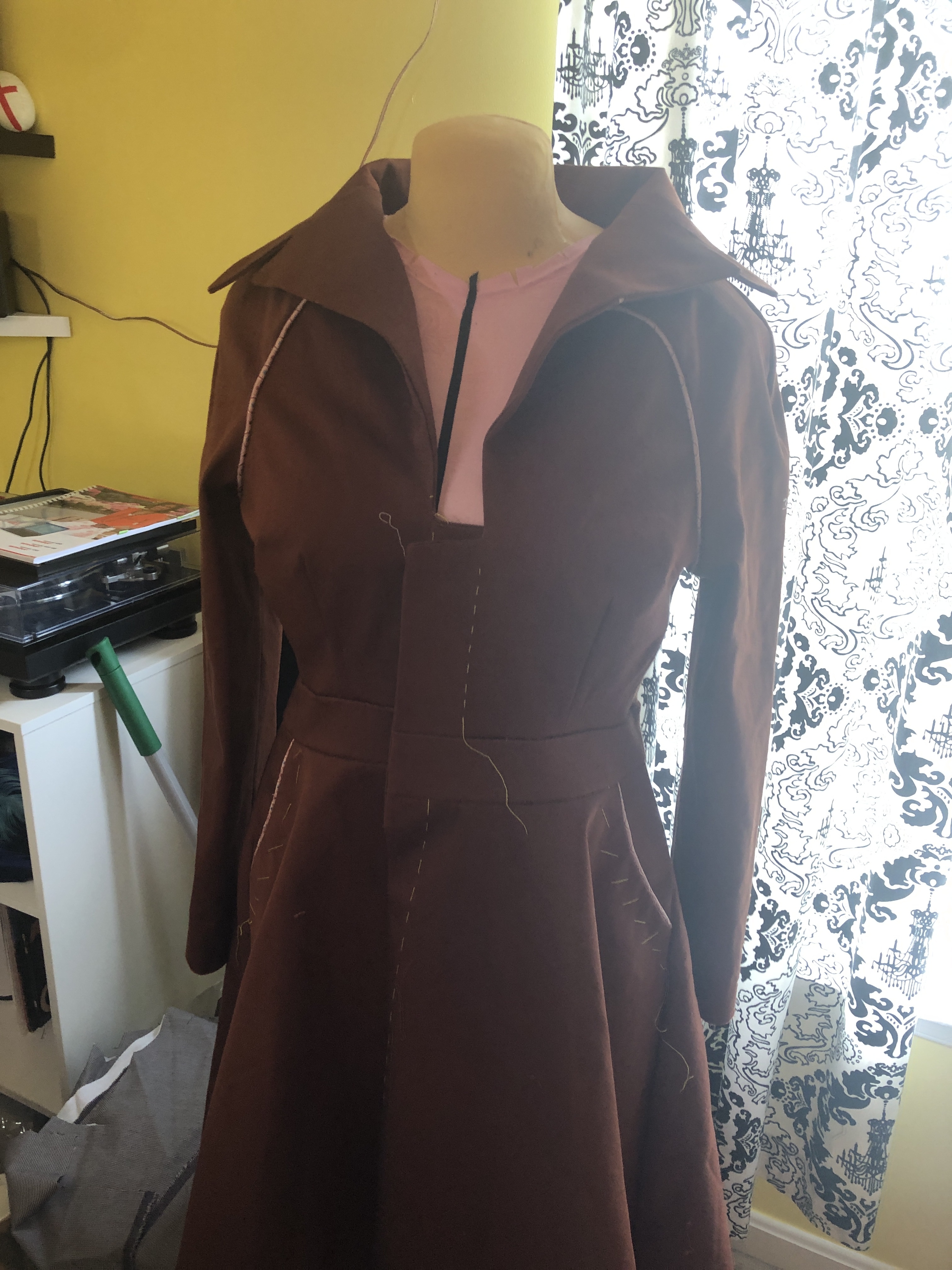
Wearable Mockups: Testing, but Make It Fashion
Mockups don’t have to be throwaways—they can be mini design playgrounds. I ended up creating two wearable versions to test the fit and flex my design muscles a little.
The first mockup came together in a gingerbread brown fabric that felt rich and grounded. But the real fun was in the details: I upcycled an old necktie, letting its gradually widening shape inspire a series of covered buttons that echoed the same progression in size. It was a playful touch that added rhythm and movement down the front of the jacket.
And because I had some unused parachute cord lying around (as one does), I figured—why not? It became piping, adding structure and just enough contrast to the garment. The result felt somewhere between utilitarian and whimsical, which, if you know me, is right on brand.
